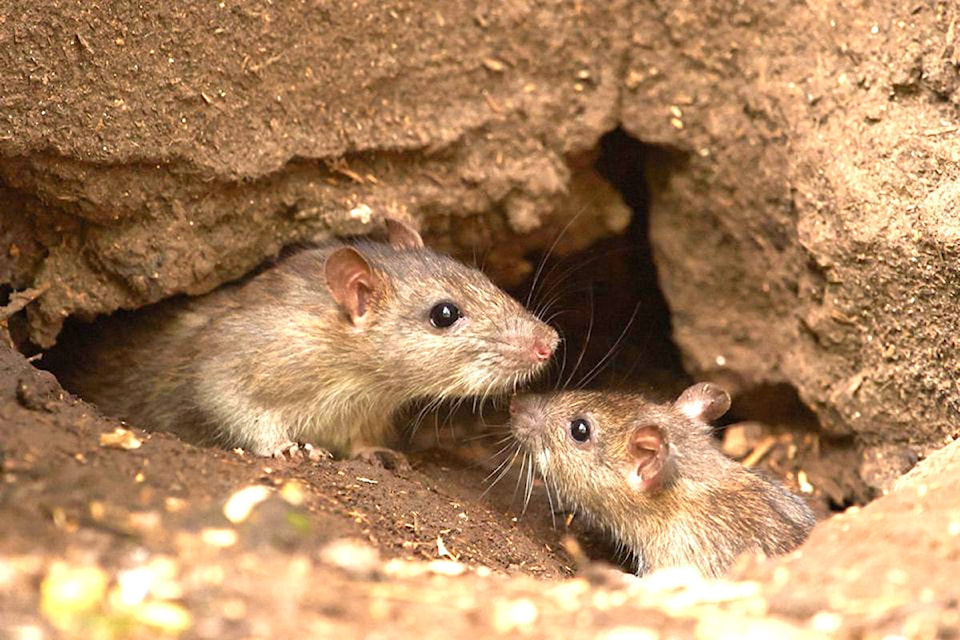By Dave White
For nearly two years, I have been monitoring the spread of rats through Nelson. In this time, I have interviewed dozens of people and would like to share a few things I have learned.
People have told me horror stories of the mayhem rats cause once they invade a home. Holes nibbled in walls, insulation pulled out for nesting, and rat urine and feces in basements causing a terrible smell. The damage in dollar value can be considerable when insulation needs to be removed and replaced. In the case of rats, the old adage of an ounce of prevention is worth a ton of cure seems to ring true.
It has been my conclusion that composters are one of the single biggest drivers of the rat population in Nelson. Poorly managed or designed composters are the issue, not composting in general. Reworking your composter will have a far bigger impact than any lethal program of trapping. Trapping has its place, when rats have invaded a home, but I feel that outside trapping will only catch a small portion of the rats present, and rats can replace the numbers in short order.
Bird feeders and pet food are also a huge attractant for rats. Birds often spill the seeds on to the ground where rodents can easily take advantage of the huge caloric content. The type of rat in Nelson (Ratus ratus), is called a roof rat because they are excellent climbers. They can often climb and access the birdfeeder directly. If you are seeing rats, consider decommissioning the birdfeeder and never leave uneaten pet food in the open where a rat can access it.
Another preventative action is assessing a home to ensure rats cannot find their way in. Older homes especially need to be carefully searched for openings, as rats can squeeze through openings as small as a quarter. If you find a hole, use copper mesh to fill the hole and prevent rats from nibbling in.
In one older home I saw a rat had taken an existing hole, just above the stone foundation, and gnawed it until it was big enough to squeeze through and enter the basement. Hardware cloth wire mesh might be the best way to address this issue.
Often, I see Nelson homes in the summer with doors left wide open. On two occasions that I know of, rats have walked right into a home through open doors. Leave doors closed or consider getting a screen door to prevent this from occurring.
Removing attractants that bring rats into neighborhoods will effectively eliminate the problem. This has been demonstrated recently by the COVID-19 shut down. In cities around the world, it has been observed that where restaurants are shut and the corresponding garbage is absent, rats are dispersing in search for food. Experts are predicting a drastic decline in rat populations as a result.
If you see or catch a rat, please take a photograph and send it along with any information you can provide to me by email: nelson@wildsafebc.com or call or text 250-505-6007. The information is being used to create a database of the distribution throughout the city which will help us better understand where our educational services are needed.
WildSafeBC rat information can be found at wildsafebc.com/rats. If you are experiencing a conflict with wildlife please call the Conservation Officer Service, RAPP Line at 1-877-952-7277.
Dave White is the Nelson and area WildsafeBC co-ordinator.
